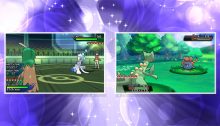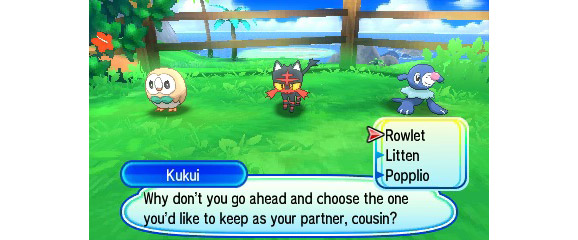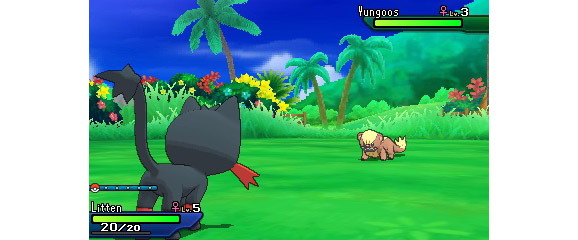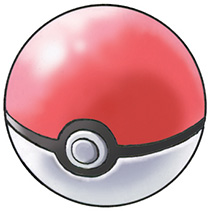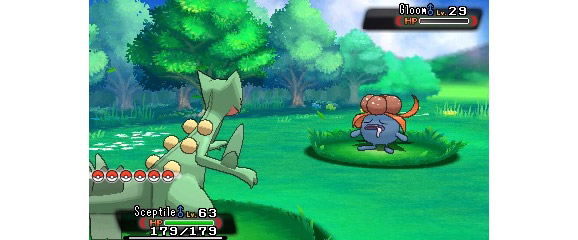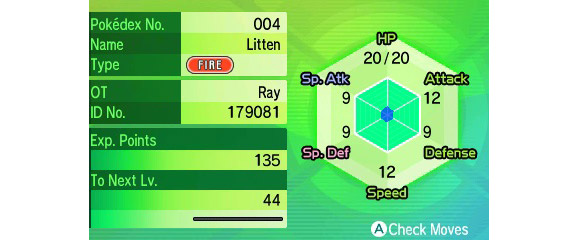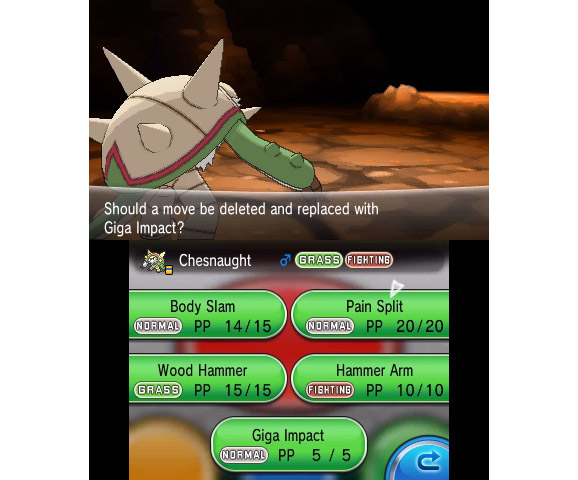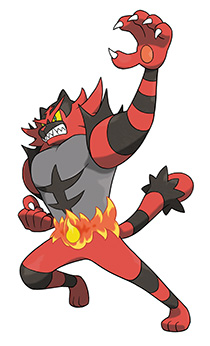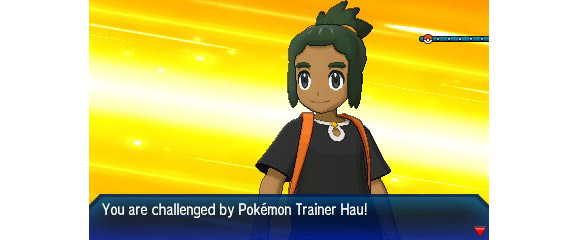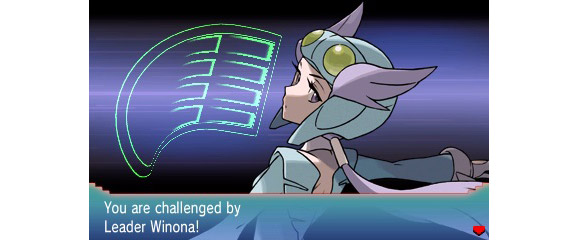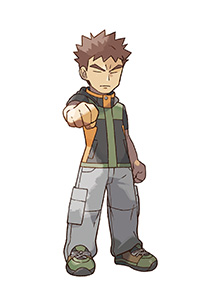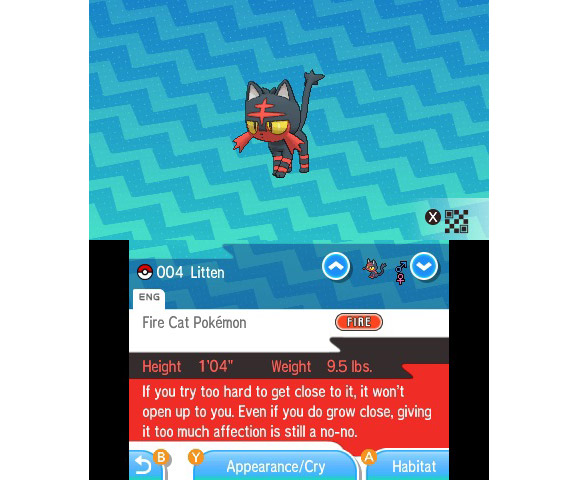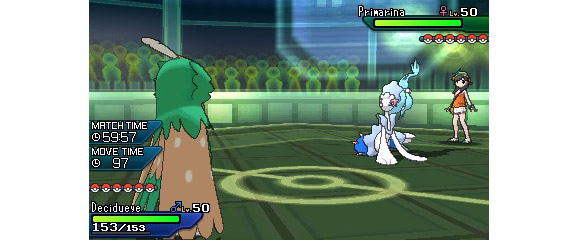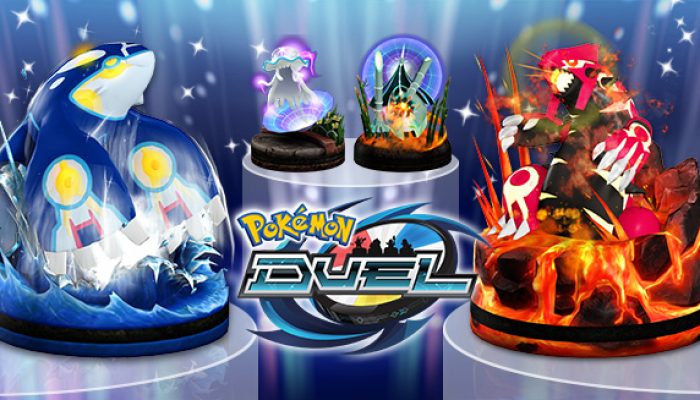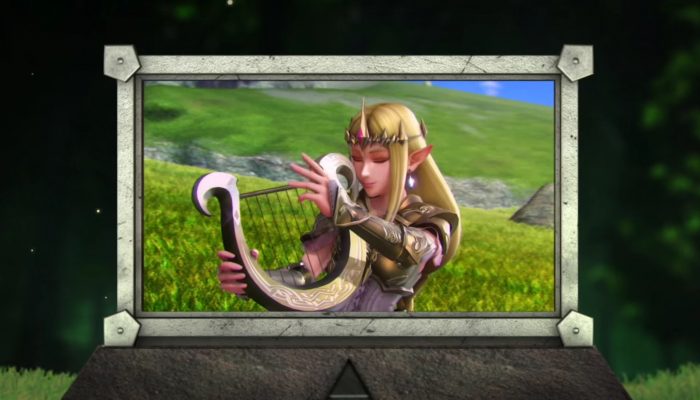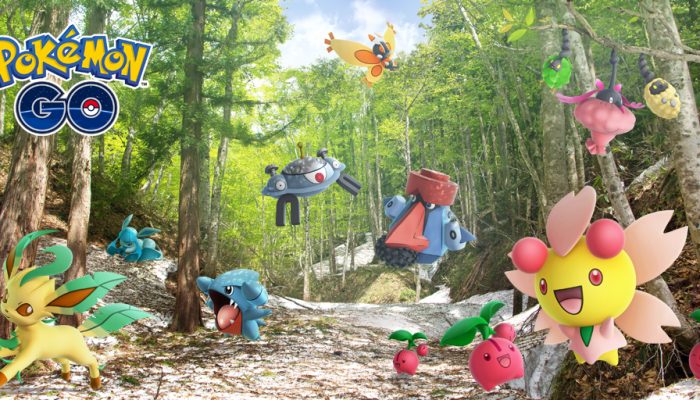 A primer to get you pumped up for Pokémon Sword & Shield.
A primer to get you pumped up for Pokémon Sword & Shield.
☆ NintendObs Weekly – Monday, March 25, 2019 – Sunday, March 31, 2019.
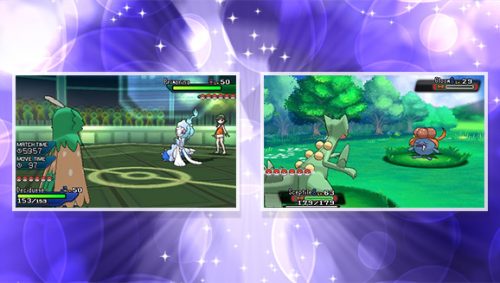
Pokémon RPGs 101
Setting out on an epic journey with a Pokémon partner by your side can be exciting and fulfilling, but it can also seem a bit daunting if you’ve not experienced an RPG before. This guide will take you through the basics to get you started on your next Pokémon adventure.
To begin with, RPG stands for “role-playing game,” a gaming genre in which the player controls a character on a journey through a fully realized world. As is typical of the genre, the Pokémon RPGs feature involved stories and loads of exploration. There are towns to visit, characters to meet, and battles to be fought. You may also see the Pokémon RPGs referred to as “core Pokémon games,” because the long-running series began with a pair of RPGs—Pokémon Red Version and Pokémon Blue Version.
Choose Your Pokémon
One of the first things you’ll do before setting out on your quest is choose your first Pokémon partner. Although the specific Pokémon from which you can choose vary from game to game, there is usually a Fire-type, a Grass-type, and a Water-type Pokémon available. Picking one type over another may make the earliest stages of the game slightly easier or more difficult, but you will soon have a plethora of Pokémon of every type available to battle alongside you. Just pick your favorite, and get ready to explore! Keep in mind that you won’t be able to find these three Pokémon in the wild, so you’ll have to do some trading to get them all. You’ll learn more about trading in a bit.
But what are Pokémon types? All Pokémon can be classified as one or two of 18 types: Normal, Fire, Water, Grass, Electric, Ice, Fighting, Poison, Ground, Flying, Psychic, Bug, Rock, Ghost, Dragon, Dark, Steel, and Fairy. Each type has advantages and disadvantages against other types. For example, Fire-type Pokémon have an advantage over Grass-type Pokémon, but they could be in trouble when they go up against a Water-type Pokémon. Building a balanced team (or “party”) of Pokémon is one of the challenges that you’ll face throughout the game.
Explore the World
Once you’ve selected your first partner Pokémon, you’re ready to dive into the game and begin your adventure! Before you start battling and catching Pokémon, however, there are some RPG basics that you’ll want to keep in mind. Perhaps the most important bit of advice to follow is to save your game often. By making sure your game is frequently backed up, you always have the opportunity for an easy do-over if you happen to be bested by a Gym Leader or if you accidentally toss the extremely rare Master Ball at a Lv. 4 Rattata.
As you travel throughout the region, you’ll come across all sorts of other people. These nonplayer characters (NPCs) are computer-controlled characters that are always willing to have a brief chat with you. Some of these NPCs will have hints to help you progress in your quest, and others will give you useful items. Some will even offer you Pokémon as a gift or a trade.
Similarly, it’s also worthwhile to explore every nook and cranny of the game world. Enter every building and travel down every trail—you might be surprised at what secrets await when you wander off the beaten path. And as you travel, make sure to stop in the Pokémon Centers that you’ll find in most towns and cities. While there, you’ll be able to heal your Pokémon for free, talk to NPCs, and—depending on the game—make use of other helpful services.
In recent Pokémon RPGs, for instance, you’ll find a Poké Mart store inside each Pokémon Center. (In earlier games, Poké Marts were in separate buildings.) These shops sell all sorts of items that you and your Pokémon will need to succeed. Poké Balls, healing items, and stat-boosting items are just some of the goods you’ll want to consider purchasing.
Occasionally, you’ll come across a natural barrier during your travels. Perhaps it’s a small tree or a large boulder or even a body of water. These obstacles may impede your progress at first, but by thoroughly exploring the region, chatting with NPCs, or even reaching a specific point in the game’s story line, you’ll likely acquire special moves for your Pokémon that can clear your path or allow you to travel on through. In some recent games, you can instead summon special Ride Pokémon to accomplish these same tasks.
Explore everywhere, talk to everyone, and save often, and you’ll go far in the world of Pokémon!
Wild Pokémon Battles
As you explore the world of Pokémon, it’s inevitable that you’ll encounter wild Pokémon to battle. This usually happens when you walk through tall grass, inside caves, or while swimming through water. When you engage in a Pokémon battle, each side chooses what action they wish to take during that turn, and then the action plays out. You can choose to use an item, direct your Pokémon to use a move, switch out your active Pokémon for another Pokémon in your party, or run away from the battle.
The battling Pokémon’s Speed stats almost always determine which Pokémon attacks first, although this can occasionally be disrupted by moves that have priority to go first. Likewise, actions that your in-game character would perform, such as using an item or switching out Pokémon, will always occur before the Pokémon’s attacks.
During wild Pokémon battles, you must decide if you want to defeat the Pokémon or catch it. Whichever you decide, you will need to lower its HP with attacks while making sure your own Pokémon stays healthy enough to battle.
Status Moves and Conditions
As you battle, don’t underestimate the importance of status moves. These moves do not inflict direct damage but instead temporarily affect how a Pokémon performs in battle. You can, for example, use certain status moves to increase your Attack stat or lower an opponent’s Speed stat.
Pokémon can also be affected by status conditions that have dramatic effects. One such status condition that you could inflict on an opponent’s Pokémon is paralysis, which decreases the affected Pokémon’s Speed stat and has a chance of preventing it from using a move. Another is the sleep condition, which prevents a Pokémon from using most moves for multiple turns. There are also status conditions that cause continuing damage, such as the burn or poison conditions, which inflict damage every turn.
Of course, your opponent can do the same to your Pokémon, so be prepared to counter any ailments that may be inflicted on your team. Luckily, there is a variety of items that can cure many status conditions.
Catching Wild Pokémon
To catch a wild Pokémon, you will need a selection of Poké Balls (or a variant thereof, such as Great Balls or Ultra Balls) before heading into battle. Instead of commanding your Pokémon to use an attack, you can opt to spend a turn throwing a Poké Ball at a wild Pokémon in an attempt to catch it. If you throw a Poké Ball at the start of the battle, though, the odds of the Pokémon staying in the Poké Ball are very low. You will want to weaken the Pokémon before using a Poké Ball.
Use moves to lower the wild Pokémon’s HP. The closer a wild Pokémon is to fainting, the easier it will be to catch. The move False Swipe, which will leave the target Pokémon with at least 1 HP, is invaluable when weakening wild Pokémon for a catch. You can also increase your odds of catching a wild Pokémon by afflicting it with status conditions. A wild Pokémon that’s asleep, for instance, is more likely to remain in a Poké Ball.
When you catch a wild Pokémon, you have the option to give it a nickname. Nicknames are not necessary, but they allow you to add a personal touch to your Pokémon friends. You can have up to six Pokémon in your party at any given time. If you have fewer than six, the wild Pokémon you catch will simply join your party (just be aware that if they take any damage during the battle in which they’re caught, their HP will still reflect that).
In old Pokémon RPGs, if your party is full, newly caught wild Pokémon are automatically transferred to a PC, which can be accessed from any Pokémon Center. In more recent games, you are given the option to send newly caught Pokémon to a PC or to add them to your party (this requires you to choose existing party Pokémon to send to a PC, of course).
Pokémon Stats and Abilities
All Pokémon have six primary stats that determine how they will perform in battle: HP, Speed, Attack, Defense, Special Attack, and Special Defense. Hit Points (HP) show how healthy a Pokémon is. As you take damage, the Pokémon’s HP goes down—when it completely drains, the Pokémon faints. Speed determines which Pokémon acts first in a battle.
The remaining four stats relate to how a Pokémon deals with the many different moves in the game. There are three different classes of moves, and they can be identified by the following symbols: physical, special, and status. We discussed status moves in the Status Moves and Conditions section. Unlike status moves, physical and special moves are directly influenced by Pokémon’s stats.
The Attack stat determines how strong a Pokémon’s physical moves will be, while Defense determines how effectively a Pokémon can stand up to an opponent’s physical moves. Likewise, Special Attack and Special Defense do the same things except for special moves. All six stats can increase as a Pokémon levels up (see Raising Your Pokémon below).
A Pokémon’s Ability is a power that is automatically triggered when necessary conditions are met. There are many different Abilities, but an individual Pokémon can only have one Ability at a time. Each Ability usually (but not always) benefits the Pokémon that sports it. For example, a Pokémon with the Intimidate Ability will lower the Attack stat of its opponents when it enters battle.
Raising Your Pokémon
As you battle with a Pokémon, it will earn Experience Points (Exp. Points). Earning enough Exp. Points will cause a Pokémon to level up, to a maximum of Lv. 100. As a Pokémon levels up, it may gain stat increases and learn new moves.
Be aware that an individual Pokémon can only know four moves at a time. If a Pokémon already knows four moves when it learns a new one, you’ll get the option to have your Pokémon forget a current move and replace it with the new one or to forgo the new move entirely. Consider this decision carefully, as it can be somewhat difficult to reverse it after the fact.
Leveling up isn’t the only way to teach a Pokémon new moves, though. Move Tutors are NPCs that can teach Pokémon new moves, including some that they may not be able to learn otherwise. There are also special items, such as Technical Machines (TMs), that can be used to teach new moves to a Pokémon.
When deciding which moves you want your Pokémon to know, try to maintain a balance of different move types. It might feel natural to have your Water-type Pokémon equipped with only Water-type moves, but adding diversity into a Pokémon’s move set can prove beneficial in battle.
Pokémon Evolution
Many (but not all) Pokémon are capable of evolving. This is the process of a Pokémon changing into another Pokémon. An evolved Pokémon is usually more powerful than its predecessor, and it can often learn more-powerful moves. Sometimes, a Pokémon will even change its type when it evolves. Litten, for example, is a Fire-type Pokémon that evolves into the Fire-type Torracat. Torracat can then evolve into the Fire- and Dark-type Incineroar. Cubone, a Ground-type Pokémon, can evolve into the Fire- and Ghost-type Alolan Marowak!
Although most Pokémon have fixed Evolutions, there are Pokémon that can evolve into different Pokémon when various conditions are met. Famously, the Normal-type Pokémon Eevee can evolve into any one of eight different Pokémon, each one of a different type!
Pokémon can evolve in a variety of ways. Certainly, the most common method of Evolution is by leveling up. When some Pokémon reach a particular level, Evolution will automatically take place. Occasionally, leveling up must occur while other conditions are being met, such as the Pokémon holding a specific item or the Pokémon being extremely friendly with the player. And sometimes other details, such as the time of day, the Pokémon’s gender, or even the location where the player is standing when the Pokémon levels up, factor into the equation.
Other methods of Evolution require the use of an Evolution item, such as a Thunder Stone or Sun Stone. Some Pokémon will not evolve unless they are traded to another player, and among that group, there are some that must be traded while holding a specific item. As you can see, there are a lot of ways a Pokémon can evolve!
You can also prevent Pokémon from evolving, if you wish. During the Evolution animation, you can press the B Button to cancel the event. You can also have a Pokémon hold an item called an Everstone, which prevents the Evolution process from happening.
Pokémon Trainer Battles
As you explore each region, you’ll come across many other Pokémon Trainers hanging out around the world. When you walk into the Trainers’ direct line of sight, they will challenge you to a Pokémon battle. Like you, these Trainers can have anywhere from one to six Pokémon in their party, and the further you progress through the game, the more powerful their Pokémon are likely to be.
Some Trainers will shift their body, giving you the opportunity to sneak past them without a battle, if you choose, but try not to make a habit of this. After all, the more Trainers you challenge, the more opportunities you’ll have to develop your own strategies and improve your skills. Taking on these Trainers also earns you valuable Exp. Points for your Pokémon and money that you’ll need in order to stock up on useful items. You don’t want to get caught with no supplies and an underpowered team because you skipped past a bunch of battles!
Challenging Gym Leaders
Many Pokémon games feature challenging battles against powerful Gym Leaders. These skilled opponents can be found in Pokémon Gyms, which are in the various towns and cities throughout each region. Gym Leaders tend to have a particular type of Pokémon in which they specialize, making it important for you to maintain strong Pokémon of many different types. You may love Fighting-type Pokémon, but a team full of them won’t be of much use when you come across a Gym Leader that favors Psychic-type Pokémon.
Pokémon Gyms are usually filled with other tough Trainers that you’ll need to defeat before earning the right to face the Gym Leader. You will have the opportunity to heal your Pokémon between each battle, and you can even leave the Gym and return without fear of having to redo any completed battles. Be alert, though—some Pokémon Gyms have puzzle elements that must be solved in order to reach the Gym Leader. Invisible walls, teleport pads, and floors made of thin, cracking ice are just some of the tricks and traps awaiting incoming Pokémon Trainers.
Defeating a Gym Leader earns you money and Exp. Points, as usual, but you will also be given a TM that can teach your Pokémon a new move (very likely one that was used by one of the Gym Leader’s Pokémon). The Gym Leader will also give you a Badge as testament to your skill. Not just a measure of rank, many of these Badges ensure that Pokémon below a certain level will obey your commands in battle.
The tropical Alola region in Pokémon Ultra Sun, Pokémon Ultra Moon, Pokémon Sun, and Pokémon Moon doesn’t have traditional Pokémon Gyms and Gym Leaders. Instead, it features a series of trials that are typically administered by a trial captain. These trials may involve Pokémon battles, but they can also include a variety of other tasks. You’ll also have to face off against a powerful Totem Pokémon before each trial is completed.
Clear enough trials on each of the Alola region’s islands, and you’ll be able to battle the island kahuna and their team of Pokémon in the grand trial.
Traditionally, earning all the Gym Badges or clearing all the trials gives you the opportunity to face the Elite Four, a gauntlet of the best Pokémon Trainers that the region has to offer. Defeat them, and you’re bound to earn a special reward.
Catching Them All
Very early in your Pokémon adventure, you are given a Pokédex, a tool that records every Pokémon that you see or catch during the game. Earning all the Gym Badges and challenging the Elite Four may be the game’s primary objective, but completing your Pokédex is an exciting secondary goal. And yes, completing your Pokédex does mean catching one of every Pokémon—with the exception of any Mythical Pokémon, which are only available through special events.
You likely won’t be able to complete your Pokédex before finishing the game’s main story line, but even after you’re done with the main adventure, you can still explore the region to track down some of the more elusive Pokémon. In addition to the many Pokémon that you catch and evolve over the course of the game, you will also have to track down rare (and difficult to catch) Legendary Pokémon to complete your Pokédex. Trading Pokémon with other players is also a great way to fill in the blanks in your collection.
Aside from bragging rights, completing your Pokédex will usually net you a valuable in-game reward, such as an Oval Charm, which aids in breeding Pokémon, or a Shiny Charm, which increases the chances of encountering rare, uniquely colored Pokémon.
Play with Others
Pokémon RPGs are fantastic single-player adventures, but they are also designed to be enjoyed with other players as well. There are usually two versions of each game release (Pokémon Ultra Sun and Pokémon Ultra Moon, for example), and although both games are mostly identical, there are version-exclusive Pokémon that can only be found in the wild in one version or the other. To get the Pokémon that are not in your version of the game, you’ll need to do some trading.
Once you’ve put together a solid team of capable Pokémon, it’s also fun to link up with other players for some battling. Defeating computer-controlled Pokémon Trainers is one thing, but you’ll have to really hone your skills to be the very best among your friends!
There is so much to see and do in the Pokémon RPGs, and these are just the basics of the games. Once you become accustomed to the world, you’ll find so much more beneath the surface. Prepare for hours of fun as you explore, catch, train, and battle. Good luck, Trainer, and have fun!
Source: Pokémon.
At NintendObserver, the comments are on Discord.
Click on Community to learn more. 🙂
…
…Wanna play? Buy a 3DS.
And if you’ve already got yours, click on Pokémon for everything you need to know about the franchise. 😀
